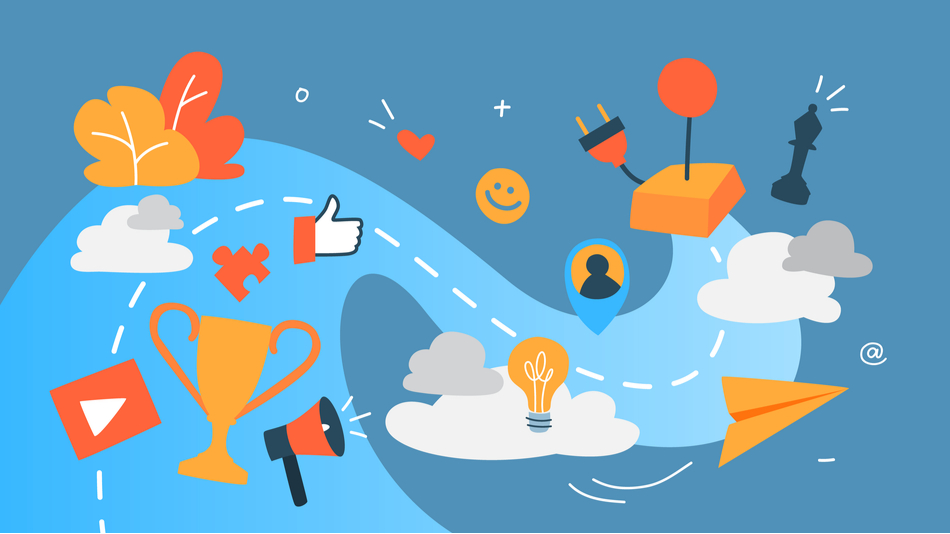Video games, shopping, and mobile phones are three of the most ubiquitous elements of contemporary society. So really, it was only a matter of time before the three intersected. A wave of gamification in retail has breached the mainstream.
Video games have been around for decades. However, it wasn’t until the rise of the smartphone that they were put into everyone’s hands. In time, businesses realized that many of the elements that made gaming so compelling — incentives, progression, positive feedback— could be applied to retail smartphone apps. Gamification became an exciting way to bring shoppers in and build their relationship with brands.
This has taken many forms, from promotional tie-ins with popular gaming products, all the way through to elements of video games being used in new versions of apps. In some ways, these are new versions of old classic marketing techniques. The customer loyalty program is a well-established method of relationship building to drive sales. Friendly competitions such as sweepstakes are even older. So really, gamification in retail is both an update on established practices and a fresh, new disruption.
Pokémon Go
A good basic example is the smash hit game Pokémon Go, released on July 6, 2016. While not a retail app, it was the most expansive deployment of augmented reality (AR), and a legitimate cultural phenomenon. There are lessons buried in the success of this app that are more widely applicable in the world of retail.
The game is fairly simple: Players download the free app then travel around to real world locations and collect the eponymous Pokémon. Where the potential for retailers came in was through sponsored “Pokéstops” where players could find items for use in-game. Stores can pay to be turned into a Pokéstop, with places like Starbucks shelling out for 7,800 stores to be part of the promotion. Sprint did much the same, and also handed out promo codes to eager players that could be turned in for even more digital goodies. By linking in with gamers in the precious young adult bracket, retailers can create synergistic partnerships with the potential to drive brand loyalty and foot traffic.
Turning Shopping into a Game
It’s not enough to simply come up with a fun game and slap your brand on it. Gamification in retail needs to link into the existing brand and prevent an enjoyable, simple path to a clear goal. Starbucks has had a lot of success through its Star loyalty program. It’s a simply enough premise: buy product, get stars. However, the coffee giant amps up the engagement through different membership tiers, limited time offers, and a stimulating mobile app that doubles as a payment system, among other functions. L Brands’s PINK Nation works on a similar premise, but adds in small games and scavenger hunts to mask the loyalty program under a more engaging system. Customers can earn badges. GameStop has also experimented with scavenger hunts in association with game publisher Capcom.
It’s important to note that these apps engage with the customer both online and in-store. The goal here is not only to bring elements of games such as rules and incentives into the retail experience, but also to bridge the gap between online and brick-and-mortar through an accessible format. By implementing objectives and “badges” that customers can earn, an element of play is introduced. Points are earned not only through shopping but through wider brand engagement. This keeps customers involved even when they aren’t shopping. Retailers can work their way into a customer’s daily smartphone usage in a natural way not unlike how the most popular mobile games do.
Gamification in Retail Operations
But it’s not just apps for customers. Gamification in retail has far-reaching potential, even into operations. Retailers already use games and incentive systems with in-store teams for training purposes. The elements of games such as rules, objectives, and points are already in use at many retail outlets. By integrating them into training environments, retailers can see improved performance among workers. Humans have a natural propensity for play and framing learning in this way has long been an effective method for training.
With the increasing adoption of mobile devices among operations teams, gamification might take on a form more similar to that which customers experience. This is good, because associates also use smartphones and play games in their daily lives, making the language of games easy to translate to operations. We’re already seeing AR training applications which could change the face of associate training and operations. Combined with elements of games, this could be a potent cocktail to invigorate teams and help them reach their full potential.

